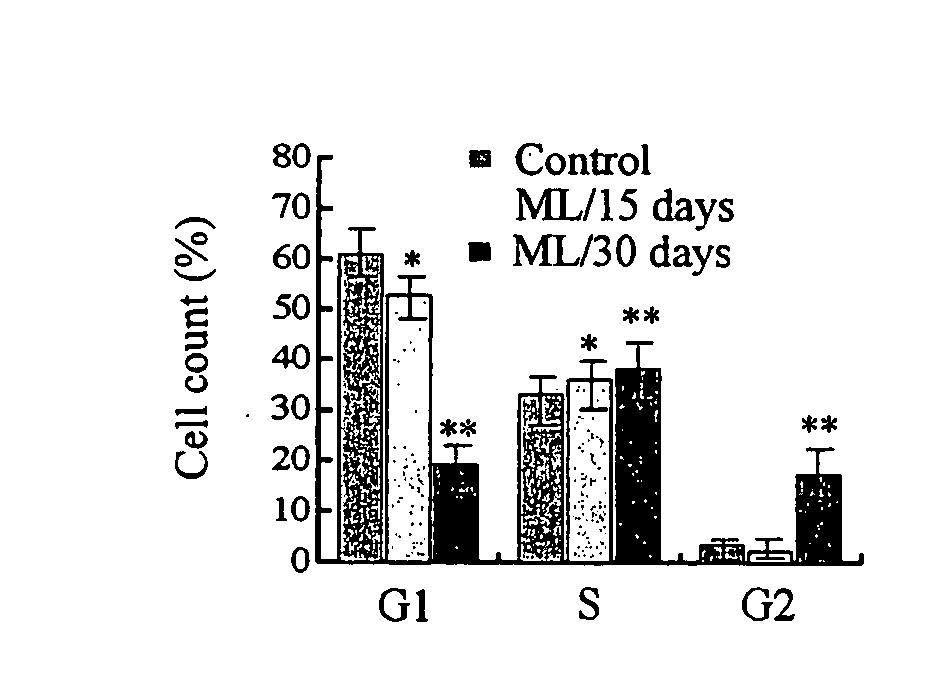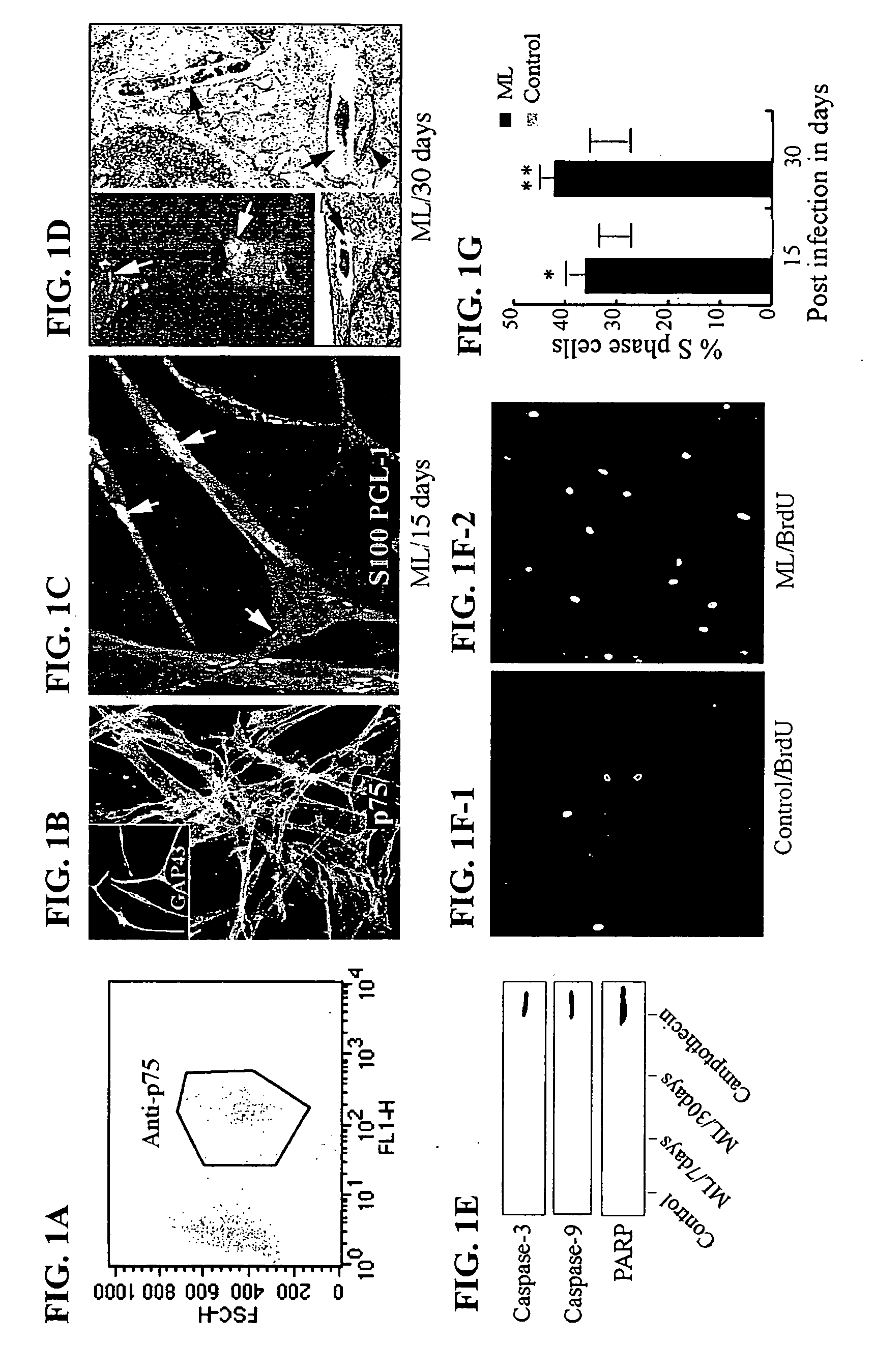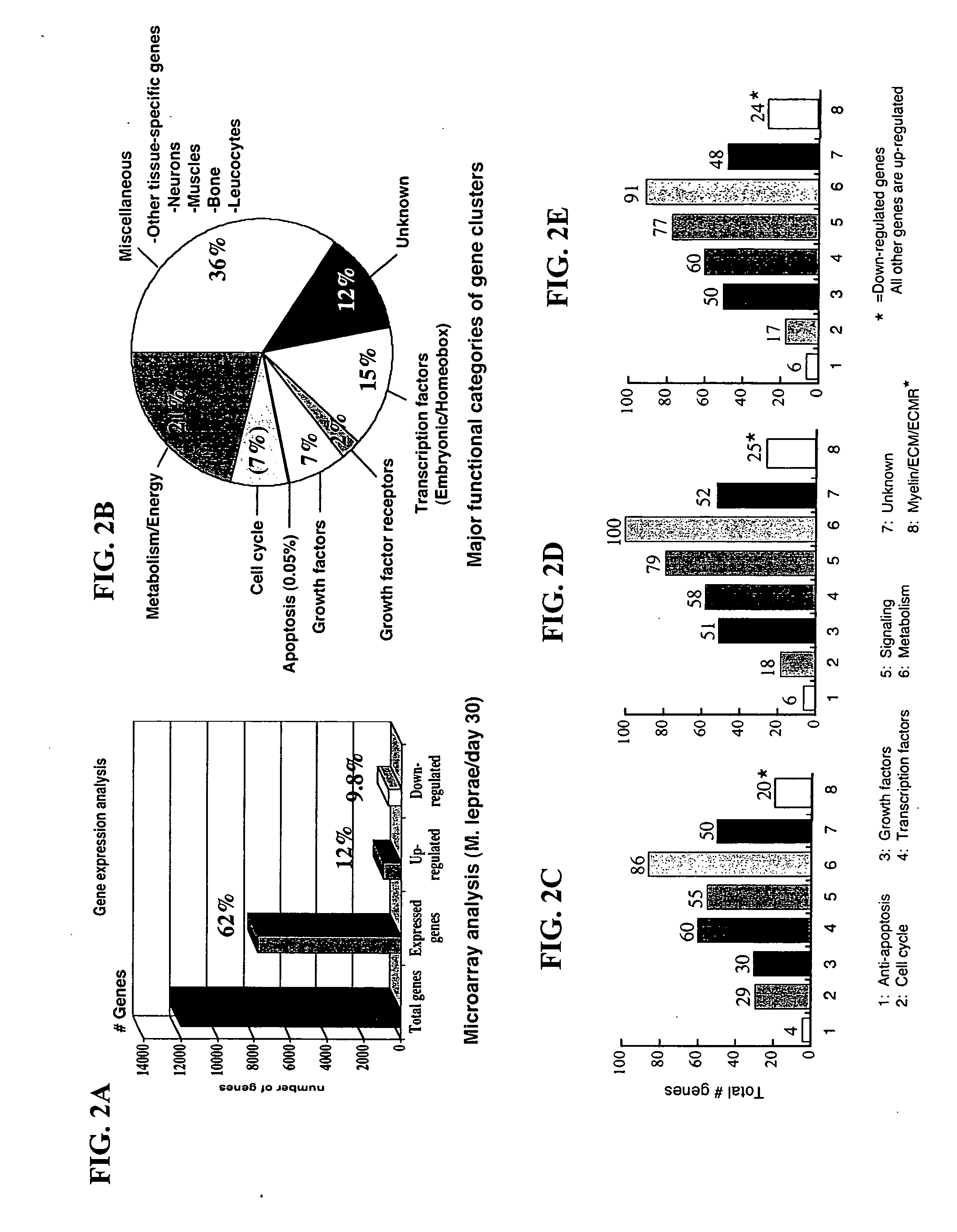Compositions, methods and kits relating to reprogramming adult differentiated cells and production of embryonic stem cell-like cells
a technology of adult differentiation and kits, applied in the field of compositions, methods and kits relating to reprogramming adult differentiation cells and embryonic stem celllike cells, can solve the problems of low cloning efficiency, most difficult technical challenges and ethical issues ever encountered, and the regenerative medicine is difficult to achiev
- Summary
- Abstract
- Description
- Claims
- Application Information
AI Technical Summary
Benefits of technology
Problems solved by technology
Method used
Image
Examples
example 1
Establishment of Human Schwann Cell Primary Cultures
[0372]M. leprae is a human pathogen, but a human model system does not exist to study the questions and issues related to the effects of M. leprae infection in human cells. Such a system would be valuable not only for development of therapeutic avenues, but also as a system to study the effect of M. leprae on the cell cycle, gene regulation, and the ability of M. leprae to reprogram various human cell types. This novel discovery, that M. leprae, or component thereof, can reprogram an adult somatic cell to an ES-like cell, which cell can then be differentiated to produce a cell of a desired tissue type different than, or the same as, the original cell, provides a powerful tool for cell-based therapies, among other things. The data disclosed herein demonstrate production, for the first time a highly purified human Schwann cell primary culture, established from different organ donors, as an ex vivo human model for M. leprae reprogram...
example 2
Functional Genomics of Human Schwann Cells Infected with M. leprae
[0382] The data disclosed herein demonstrate that M. leprae is capable of maintaining its viability in Schwann cells despite massive gene decay and deletion in the M. leprae genome. Further, M. leprae promotes Schwann cell survival and proliferation during infection, without morphological, phenotypic, or functional changes in the cells. While not wishing to be bound by any particular theory, the data demonstrate that M. leprae simplifies the Schwann cell intracellular environment to facilitate its slow growth and propagation without interference from the differentiated cell's abilities to prevent such growth. For example, the formation of myelin sheath, a typical example of differentiation, within Schwann cell cytoplasm restricts the intracellular space for bacterial replication and growth inside Schwann cell. M. leprae has the ability to down-regulate all the genes necessary for myelin synthesis, such as genes encod...
example 3
M. leprae Infected Human Schwann Cells Proliferate Continuously But do not Undergo Transformation
[0396] The hallmark characteristics of stem cells are: i) indefinite proliferation in vitro in an undifferentiated state; (ii) a normal karyotype through prolonged culture; and (iii) the potential to differentiate into other cell types. Stem cells maintain the ability to proliferate in vitro without evidence of transformation, which is in contrast to other proliferative cells transformed with oncogenes or oncoviruses, or derived from tumor lines, but without telltale signs such as lack of contact inhibition. The data disclosed herein demonstrates, for the first time, a method to reprogram differentiated cells into an ES-like cell without transformation. That is, the data demonstrate that adult cells can be reprogrammed and display many, if not all of the traits of a stem cell, including continuous proliferation without transformation.
Cell Lines
[0397] The breast adenocarcinoma epithel...
PUM
| Property | Measurement | Unit |
|---|---|---|
| Time | aaaaa | aaaaa |
| Composition | aaaaa | aaaaa |
| Level | aaaaa | aaaaa |
Abstract
Description
Claims
Application Information
 Login to View More
Login to View More - R&D
- Intellectual Property
- Life Sciences
- Materials
- Tech Scout
- Unparalleled Data Quality
- Higher Quality Content
- 60% Fewer Hallucinations
Browse by: Latest US Patents, China's latest patents, Technical Efficacy Thesaurus, Application Domain, Technology Topic, Popular Technical Reports.
© 2025 PatSnap. All rights reserved.Legal|Privacy policy|Modern Slavery Act Transparency Statement|Sitemap|About US| Contact US: help@patsnap.com



